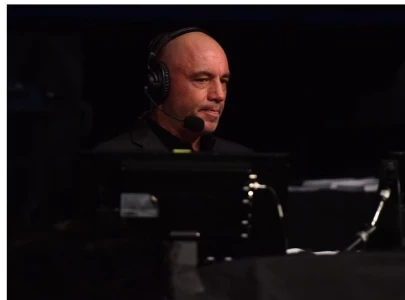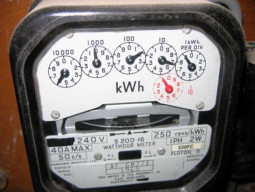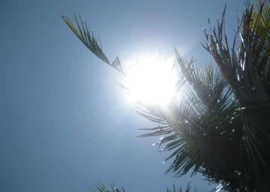
Scene one: Kashmir’s status as an independent state is changed unilaterally. Political and social activists are thrown in jail and house arrest. Media in Kashmir is gagged. The region is shut down from the rest of the world through a blanket curfew imposed on cities, on the internet, and on every activity that marks a normal living. To change the demographics of Kashmir, people from outside Kashmir have been allowed to buy property and given the residential permit.
Scene two: India digs deeper into the caveat of communal differences with the introduction of the Citizenship Amendment Bill (CAA). This would make its Muslim population a pariah and reinforce the Rashtriya Swayamsevak Sangh (RSS) philosophy of “otherisation” of the Muslims. Police in Delhi and other major cities of India have been given free hand to molest and terrorise protestors of the bill.
Scene three: The Covid-19 induced lockdown brings into spotlight poverty-stricken migrants who would have to walk miles towards their villages and ancestral homes to escape death at the hand of hunger. The Indian government has no mechanism to support this poor lot, in spite of all the hullabaloo of having a magnet economy. Many die on their way, while a few would crush to death by a speeding train that could not anticipate migrants sleeping on rail tracks to ward off fatigue.
Scene four: India is reluctant to see Afghanistan come out of the 19-year-long war and is creating hurdles in the fruition of the peace agreement signed between the Taliban and the US on February 29. Its insistence to have India’s brand of government in Afghanistan to keep a check on Pakistan’s involvement is pushing further away the possibility of having a politically stable Afghanistan.
Scene five: India threatens Pakistan with the Balochistan spectre. The argument goes that if Pakistan does not back off from its demand to liberate Kashmir, India would assist the Baloch insurgents for liberation from Pakistan. Making unabashed revelations on national television of having connections with the Baloch insurgents living in exile in Europe, India is sowing seeds of racism in Pakistan on the perils of destabilising the region.
Scene six: India is humming along with the US to frame China as the originator of the coronavirus to get the production business moved to its home turf and see China wither in its image of a global superpower.
Scene seven: India’s military budget at $71 billion is the third biggest military spending in the world. A merciless budget considering India’s poverty credentials. According to the SOS Village Canada website, 68.8 % of India’s population lives on less than $2 a day and over 30% have less than $1.25 per day — they are considered extremely poor. This makes India one of the poorest countries in the world.
What is missing in this script is India’s ability of regional coordination and domestic empathy that mould countries into the leadership frame — an inspiration India has long desired to achieve. Just when every significant country in Asia has demonstrated neutrality to adapt to the new global trends seeking an end to the Afghan war, India is dragging its feet on the issue. The fact is that any solution to Afghanistan goes through the road of adjusting to the demands of the multiple stakeholders’ interests.
The Taliban were the nemesis of everyone in the world when 9/11 struck. They remained a sore bristle until the Northern Alliance government because financial corruption and warlordism proved inept to anchor the diverging political and tribal forces to a common position. The combination of political jockeying among the Afghan power contenders and an oft-disarrayed US-led Nato operation in Afghanistan stood the Taliban out, once again, as a defining stakeholder. In a natural international relation response, the necks that once stuck out for the Northern Alliance shifted position to follow the Taliban. India, however, kept ignoring the Taliban on the pretext that their return to power would recast the Jihad era of the ’90s with the potential to transcend into Kashmir. If this argument holds then neither China, Russia nor Iran should welcome the Taliban. Each one of them had seen terrorism branching out to their countries during the Taliban reign.
The Taliban are ready to sit with India, which is part of the US mandate to see regional powers taking ownership of the Afghan crisis. The demand that the Taliban should first recognise the Afghan government before shaking hands with India is a call that even the US had been unable to extract. As for the fear of Jihad returning, this spectre is more likely to re-emerge in a lawless Afghanistan in the grip of conflict and political polarisation. Hence, all the more important for India to respond to the Taliban and the US overture.
The US is desperate to shut down the war in Afghanistan and will broker no hurdle.
The last impasse, spreading months-long political uncertainty, has also been removed with the power-sharing agreement between President Ashraf Ghani and Dr Abdullah Abdullah. Not before the US threatened to dry financial aid to Afghanistan to the tune of $1 billion did this deadlock fall apart.
In an interesting twist, Abdullah will also lead peace negotiations with the Taliban under the title of chairman of the High Council for National Reconciliation. Bringing Abdullah into the centre stage of peace negotiation will have three obvious consequences. One, it will enable the release of the Taliban prisoners, a precondition to the ceasefire, on which Ghani has been showing resistance. Two, a legitimate people’s representative, as a peace leader would address India’s concern of seeing the Taliban engaged with the Afghan government. Three, it will jumpstart the intra-Afghan peace dialogue, a prelude to any successful negotiation for the transfer of power with the US.
Notwithstanding, its billions of dollars of investment in Afghanistan, India’s overriding concern in the contemporary scenario should be to favour an arrangement that breaks the Afghan out of the jinx of internal rifts, tribal prejudices, and the buffer-state hangover. For this change to occur India would have to revisit its political script, which in its present shape is divisive and disruptive.
Published in The Express Tribune, May 21st, 2020.
Like Opinion & Editorial on Facebook, follow @ETOpEd on Twitter to receive all updates on all our daily pieces.


1726222798-0/Tribune-Pic-(13)1726222798-0-165x106.webp)















COMMENTS
Comments are moderated and generally will be posted if they are on-topic and not abusive.
For more information, please see our Comments FAQ